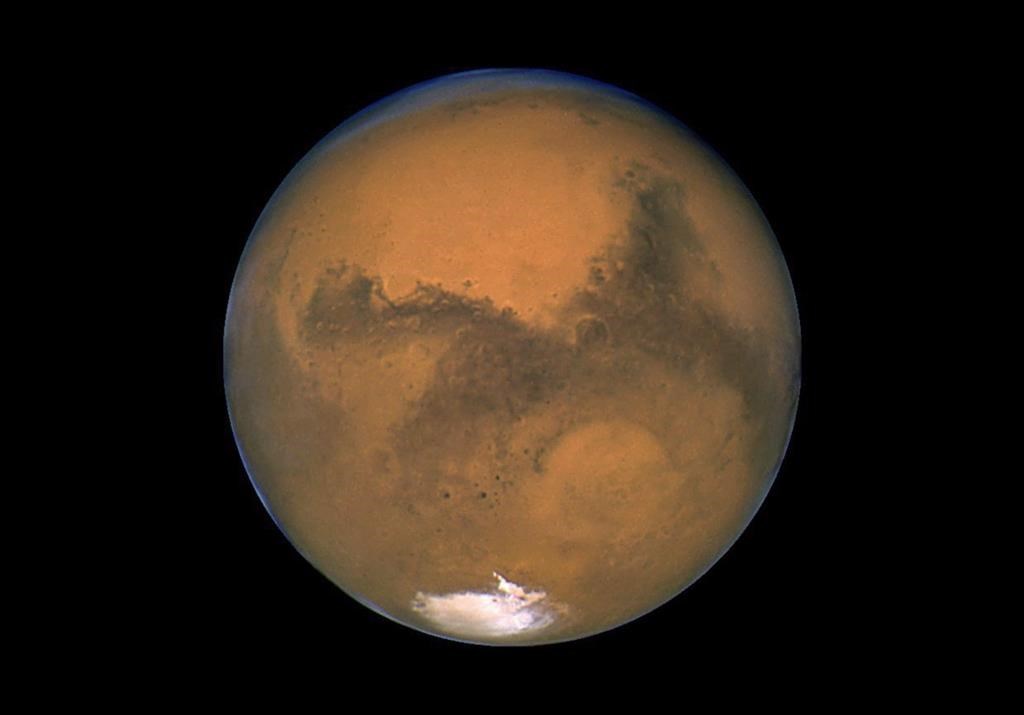New research suggests Mars’ moons were once part of the planet, blasted into space by some cataclysmic collision long ago.

Until now, the most common theory was that Deimos and Phobos were once asteroids, captured into orbit by Mars’ gravitational field.
READ MORE: Liquid water, life on Mars – U of M opens up on outer-space
“They kind of look like asteroids,” said Chris Herd, a planetary geologist at the University of Alberta and a co-author of a new paper published in the Journal of Geophysical Research.
“They’re really pockmarked with craters and they have those characteristics that make them look like asteroids we’ve seen farther out.”
Still, doubts remained — especially since the red planet’s two moons are so black.
READ MORE: Canada sets eyes on Mars, calls on companies to develop future space technologies
“Those objects are really dark,” Herd said.
“They absorb most of the light, with the exception of a few per cent of the sunlight that comes in. That means the information you have for figuring what they’re made of is limited.”

Get breaking National news
READ MORE: On July 31, Mars will come closer to Earth than it’s been in 15 years
Herd and his colleagues took a new approach.
They analyzed light recorded from one of the moons by the Mars Global Surveyor mission that orbited the planet in 1997. They then compared that analysis with a similar look at a meteorite known to have come from the asteroid belt — the Tagish Lake meteorite from northwestern British Columbia.
They didn’t look like each other at all.
“It was not a match,” said Herd. “The best match is ground-up basalt, the kind of common rock that Mars is made of.”
The most likely conclusion is that Deimos and Phobos are chunks of rock blown off the surface of the planet, perhaps by a collision with some other heavenly body far back in the history of the solar system.
The theory may help to explain another puzzling feature of a planet that has fascinated skywatchers for centuries.
READ MORE: NASA’s rover finds more evidence that life on Mars may be possible
Mars’ northern hemisphere has a far lower elevation than its southern half. The difference is large — several kilometres.
“We don’t really know why that is,” said Herd. “It’s a pretty fundamental problem in Mars science.”
Scientists have long wondered if the difference is the result of some long-ago impact.
“There’d be lots of debris that came off of that.
“If that was the case, then you you’d probably end up producing a whole bunch of objects in orbit around Mars and Phobos and Deimos are the ones that are left.”
- Moraine Road RV residents get temporary extension while city seeks long-term solution
- Calgary’s termination of Green Line adds extra frustration for expropriated Eau Claire residents
- Calgary police searching for sexual assault suspect after attack at swimming hole
- Home ownership feels out of reach for many in Calgary













Comments